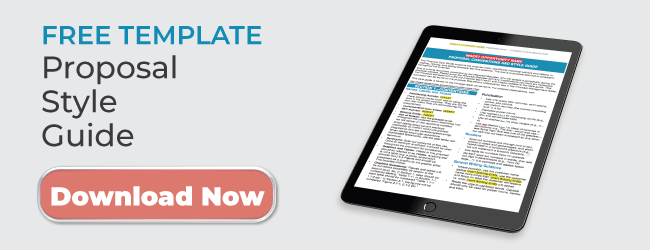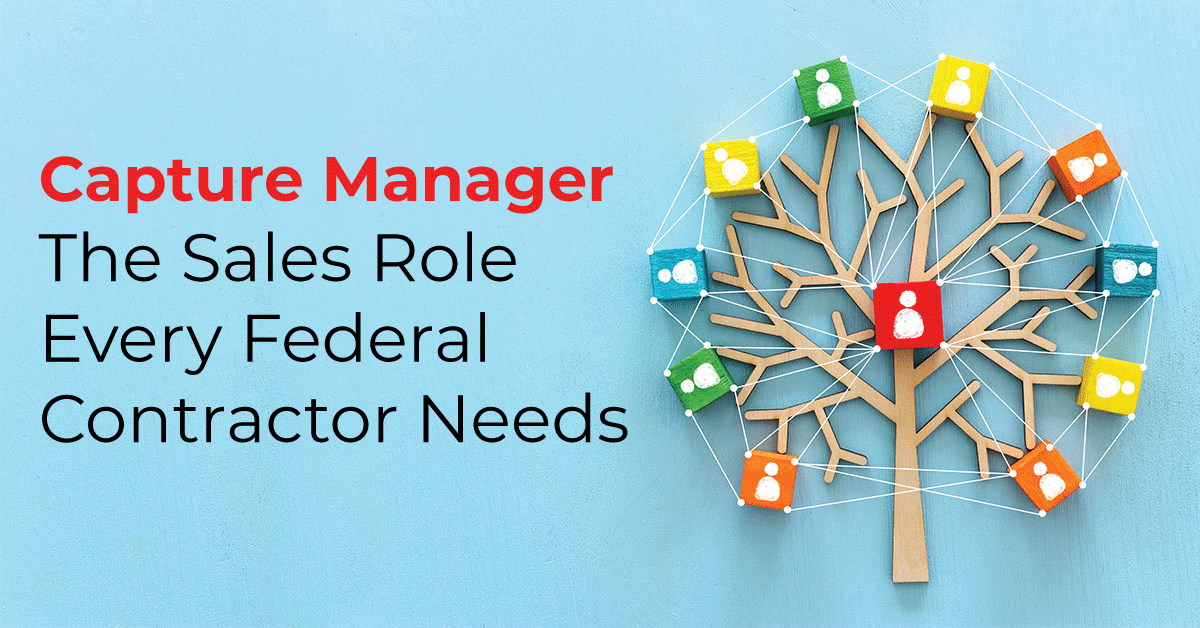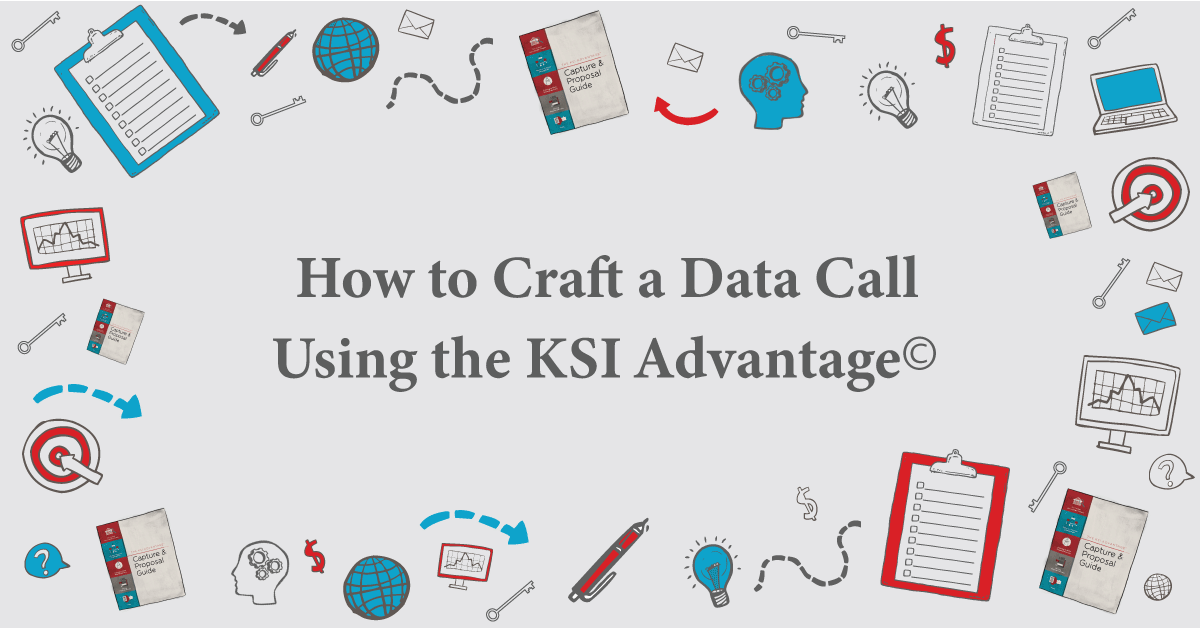
As proposal professionals, we continually look to find ways to lead our teams and ensure we are getting the best results possible.
Tina Benson suggests in an article published on the Chartered Management Institute website that, “by and large, teams reflect their management. So being an effective, proactive manager increases your team’s chances of achieving success.”
As Proposal Managers, we can make great strides in increasing the success of our teams by leveraging the following six proactive proposal management tools.
1. Proposal Schedule
One of the first things you should establish for your proposals is the proposal schedule. This schedule drives the timeline for your team and helps ensure you achieve your final submission in the smoothest way possible.
The proposal schedule should set the dates for key milestones and events. For most large efforts, these milestones include the Blue Team, Green Teams, Pink Team, Red Team, and Gold Team reviews, as well as all associated author pens down dates and times.
Below is a sample detailed schedule taken from the KSI Advantage© Capture & Proposal Guide.

To establish a proposal schedule, we typically work backward from the delivery date. Make sure to always schedule sufficient time for final editing, production, book check, and delivery. In addition, try to keep 10 percent of the available time in reserve to manage unforeseen events, such as a system crash, family emergency, or client crisis that requires immediate attention.
2. Proposal Outline and Compliance Matrix
The next key tool you should establish for each proposal is your proposal outline and compliance matrix. This document maps each of the RFP requirements back to your proposal outline so that the team can be sure you are addressing all requirements in our response. The proposal outline and compliance matrix define section numbers, headings, page allocations, assigned writers, and corresponding RFP sections.
When outlining, always organize sections according to the proposal instructions, unless otherwise specified by the RFP. Where the evaluation criteria do not align cleanly to the instructions, add in additional headings. Next, map in any relevant SOW or other RFP sections, as necessary. This is usually required in the technical and past performance sections of the response.
To facilitate evaluation, always follow the order of the RFP, even if the order does not make logical sense to you or your team. Use language very close to the RFP to make the compliance mapping easy for the evaluators. In addition, when the Government’s numbering scheme is clear, include the RFP section mapping in parentheses after each heading to further facilitate the evaluation.
3. Style Guide & Wall of Truth
Another key document we stand by as Proposal Managers is the Style Guide and Wall of Truth. A proposal style guide is a set of standards for the writing, formatting, and design of a proposal.
This critical document establishes style requirements to promote consistency. Style guides set standards to be used in areas such as punctuation, capitalization, formatting of numbers and dates, table appearance, and other areas. The standards should include conventions from the proposal department’s standard style guide (if it has one) but should also be tailored to the requirements of each individual customer and RFP.
Reserve the “Wall of Truth” section to include proposal-specific items that pop up during proposal development. These items might include the number of cleared personnel employed by the company, the years of experience the company has supported the customer, and proposal-specific nomenclature.
By establishing style guidelines early on with a style guide, proposal writing starts out consistent. To make sure this happens, it's helpful to review the style guide with your writers before they start writing.
This helps ensure that writers are using common conventions from the start. Having writers use a common style guide also makes editing easier in the end because most of the inconsistencies are already addressed. It further streamlines the editing process because the style conventions are already defined for the editors.
Additionally, if you have multiple editors, they will all be editing to the same set of standards. You can download our Style Guide Template here.
4. Action Items List & Status Trackers
Action Item Lists and Status Trackers are also very useful management tools. The Action Item List is a chronological master list of action items, requests, assignments, and deliverables.
Typically, an item will remain on the Action Item List until the Proposal Manager or Capture Manager closes it out. If a critical item on the Action Item List is not closed out in a timely manner, it might be escalated for immediate attention by senior management.
Related to the Action Item List are Status Trackers. Status Trackers are particularly helpful for large efforts with multiple teammates and many moving parts. You can use individual Status Trackers to track the status of teammate data calls, customer past performance questionnaires, and other similar requirements.
Action Item Lists and Status Trackers help identify and resolve roadblocks and critical issues, and they can help in flagging any identifying any potential showstoppers as well.
5. Proposal Workspace
Another critical proposal tool is the proposal workspace. Before the proposal kickoff, we always work with our team to establish a proposal workspace that includes a file repository to organize and secure proposal related data, including solicitation files, capture and solution information, proposal management documents (e.g., schedule, outline, and compliance matrix, etc.), potential reuse information, working proposal drafts, and graphics.
Typically, it's helpful to establish this workspace using a supporting application, such as SharePoint, Privia, or Virtual Proposal Center (VPC). These collaborative software applications also include built-in features for version control to help revert to a previous version if critical content is accidentally deleted.
Our team then uses the collaboration portal for writer collaboration, color team reviews, and final production.

6. Daily Stand-Up Meetings
Daily stand-up meetings help to flag any issues that might be preventing the team from moving forward. Our stand-up meetings typically include a brief capture update, a review of upcoming schedule milestones and deadlines, a quick status of each major section, and an action item review.
Because you don't want to interfere with the productivity of my team, try to limit your daily stand-up meetings to no more than 15 minutes. Schedule separate meetings for issues that seem like they will require more time.
Final Thoughts
As proposal professionals, we continually look to find ways to lead our teams and ensure we are getting the best results possible. To do so, we should strive to be effective, proactive managers. One way to this is to leverage proactive proposal management tools. By establishing solid proposal schedules, clear proposal outlines and compliance matrices, detailed action item lists and status trackers, and logically organized proposal workspaces, we set the stage for smooth proposal development.
To help manage the proposal process and these tools, we can use daily stand-up calls to help flag critical issues that might be preventing the team from moving forward. Though there are certainly other tools that you may use to help manage your proposal teams—these six tools are the ones that you simply should not live without.
This article was originally published on Proposal Reflections.









